| Vintage Pulp | May 21 2021 |


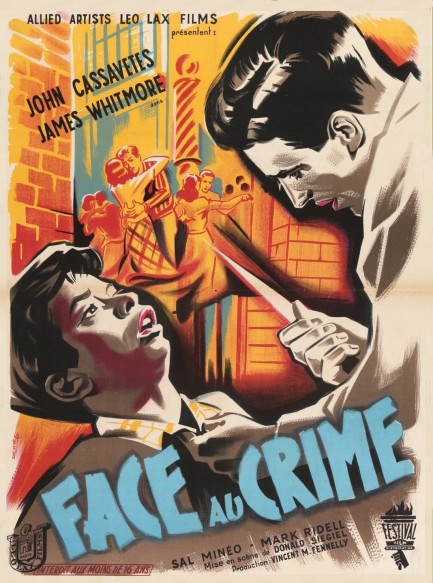
| Intl. Notebook | May 12 2020 |

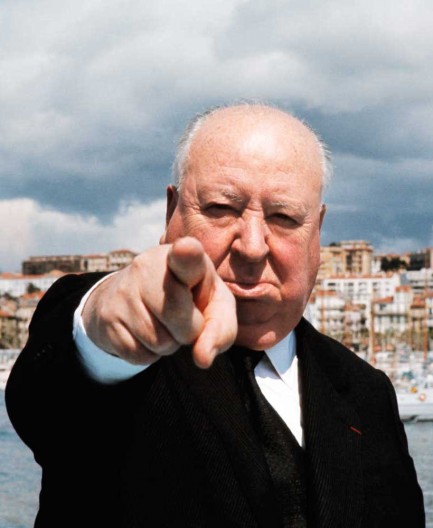
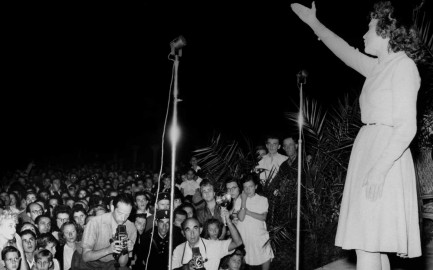
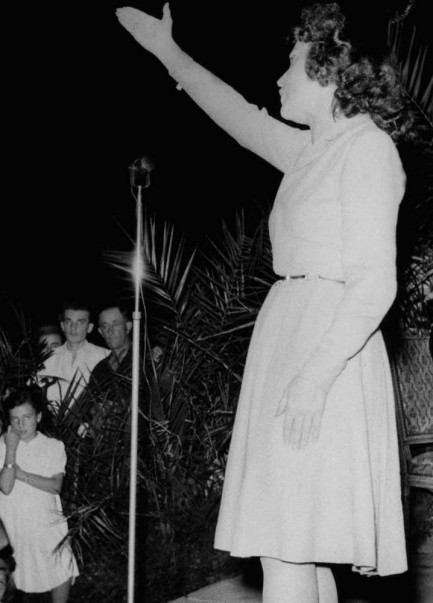 Edith Piaf sings on the terrace of the Carlton Hotel on the iconic Boulevard de la Croisette at the first Festival de Cannes to be held under that name, in 1946. Back then the event took place in September and October, but would shift to May a bit later.
Edith Piaf sings on the terrace of the Carlton Hotel on the iconic Boulevard de la Croisette at the first Festival de Cannes to be held under that name, in 1946. Back then the event took place in September and October, but would shift to May a bit later.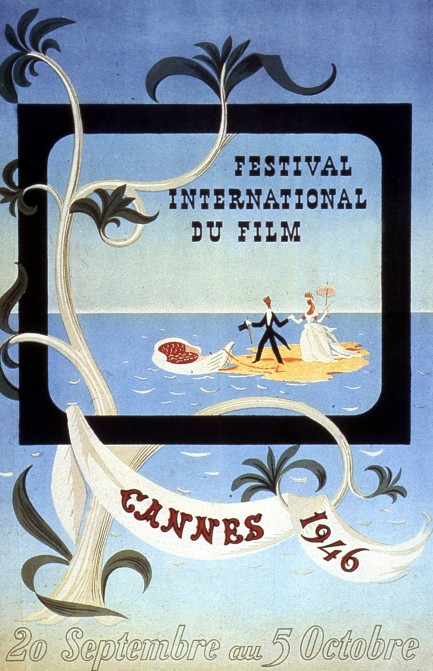
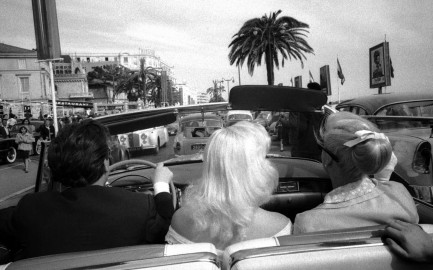 Diana Dors and Ginger Rogers arrive at the fest the only way anyone should—breezing along the beachfront in a convertible, in 1956, with an unknown driver.
Diana Dors and Ginger Rogers arrive at the fest the only way anyone should—breezing along the beachfront in a convertible, in 1956, with an unknown driver.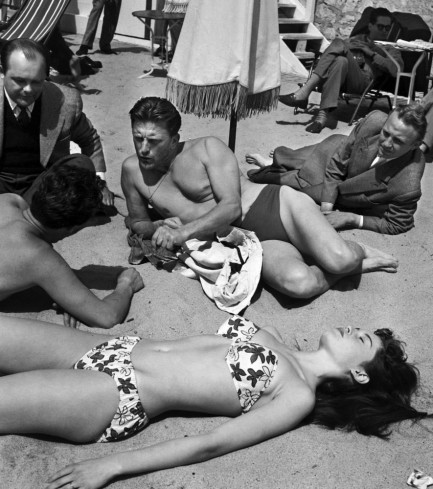 Kirk Douglas holds court on the beach in 1953, and Brigitte Bardot soaks up rays in the foreground.
Kirk Douglas holds court on the beach in 1953, and Brigitte Bardot soaks up rays in the foreground.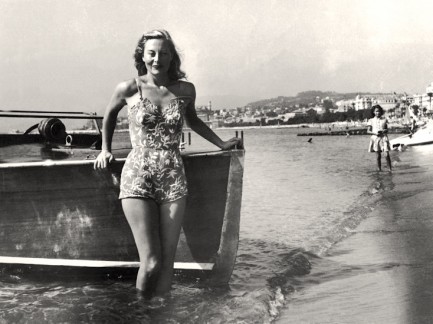 Michele Morgan poses at the first Festival in 1946. Photo ops of this sort were essential sources of publicity for stars, and would soon become opportunities for non-stars seeking to be discovered.
Michele Morgan poses at the first Festival in 1946. Photo ops of this sort were essential sources of publicity for stars, and would soon become opportunities for non-stars seeking to be discovered.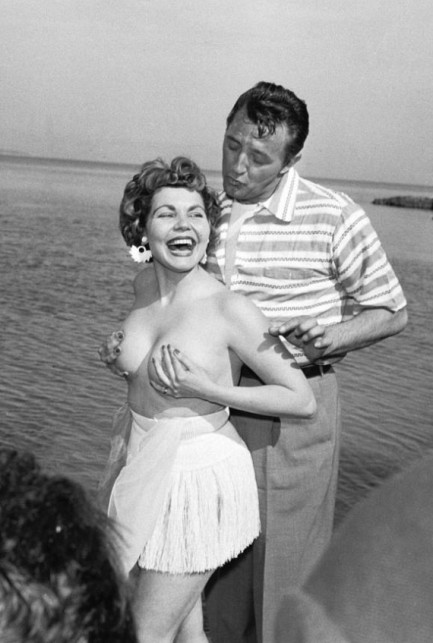 Case in point. Robert Mitchum poses with actress Simone Sylva in 1954. Sylva was allegedly not supposed to be there, but shucked her top and photo-bombed Douglas in an attempt to raise her profile. It didn't work. She made only a couple of credited movie appearances after her topless stunt.
Case in point. Robert Mitchum poses with actress Simone Sylva in 1954. Sylva was allegedly not supposed to be there, but shucked her top and photo-bombed Douglas in an attempt to raise her profile. It didn't work. She made only a couple of credited movie appearances after her topless stunt.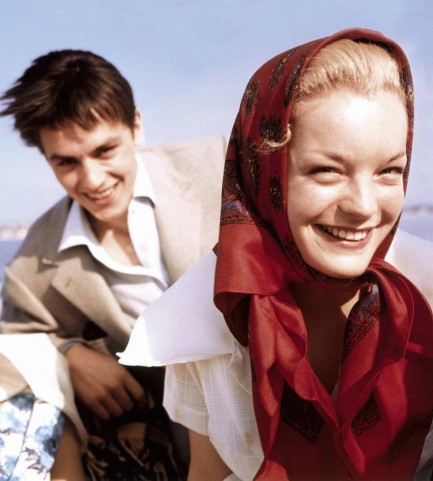 Romy Schneider and Alain Delon at the 1959 fest.
Romy Schneider and Alain Delon at the 1959 fest.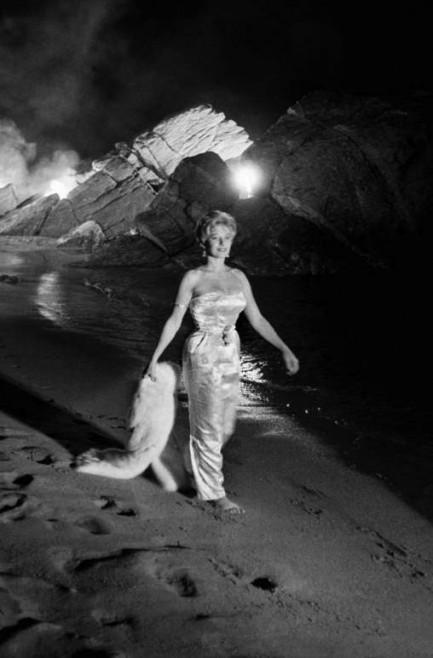 An unidentified model or actress poses in the style of Anita Ekberg from La dolce vita in 1960. This looks like it was shot at Plage du Midi, which is a beach located a little ways west of the Cannes town center.
An unidentified model or actress poses in the style of Anita Ekberg from La dolce vita in 1960. This looks like it was shot at Plage du Midi, which is a beach located a little ways west of the Cannes town center. A unidentified partygoer is tossed into a swimming pool after La Dolce Vita won the the 1960 Palme d’Or. The Festival is almost as well known for legendary parties as for legendary film premieres.
A unidentified partygoer is tossed into a swimming pool after La Dolce Vita won the the 1960 Palme d’Or. The Festival is almost as well known for legendary parties as for legendary film premieres.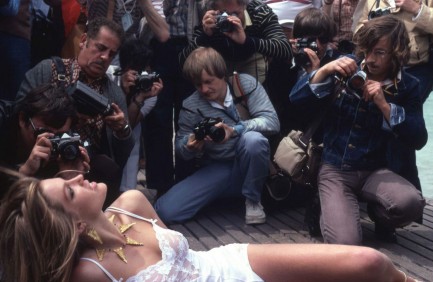
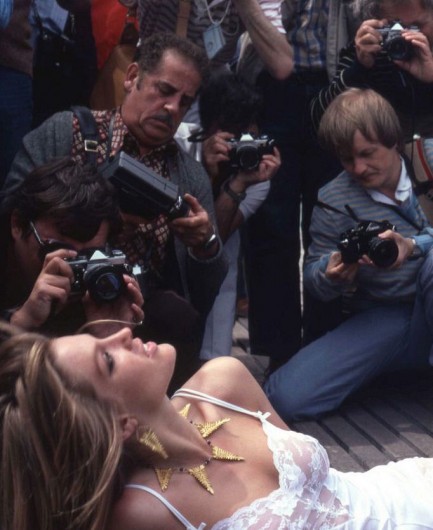 Another unidentified model or actress poses on the boardwalk in 1979. Generally, you don't have to be known to draw a crowd of photographers—you just have to be nearly bare. She's wearing lingerie, so that explains the interest, though this is modest garb for a Cannes publicity stunt. It's never a surprise to see a headline-seeking film hopeful strip all the way down to a string ficelle féminin, or thong, which is the limit of what is legal in Cannes
Another unidentified model or actress poses on the boardwalk in 1979. Generally, you don't have to be known to draw a crowd of photographers—you just have to be nearly bare. She's wearing lingerie, so that explains the interest, though this is modest garb for a Cannes publicity stunt. It's never a surprise to see a headline-seeking film hopeful strip all the way down to a string ficelle féminin, or thong, which is the limit of what is legal in Cannes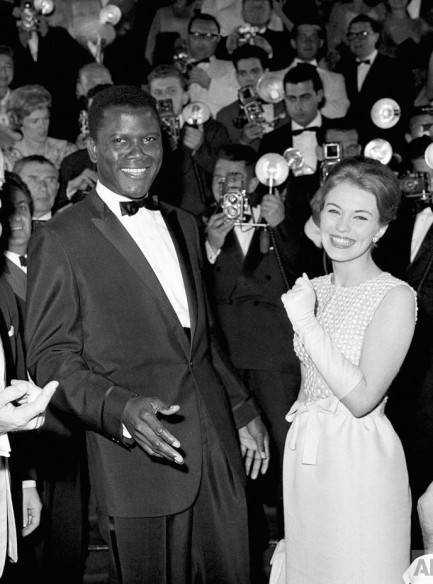 Sidney Poitier and Jean Seberg have a laugh in 1961. This was the year Poitier's flick Paris Blues was released, so it's possible he had jetted down from the capital for the Festival.
Sidney Poitier and Jean Seberg have a laugh in 1961. This was the year Poitier's flick Paris Blues was released, so it's possible he had jetted down from the capital for the Festival.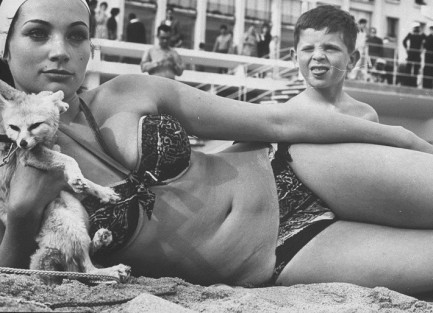 Philomène Toulouse relaxes on the sand in 1962 while a boy practices the classic French look of disgust he'll be using the rest of his life.
Philomène Toulouse relaxes on the sand in 1962 while a boy practices the classic French look of disgust he'll be using the rest of his life.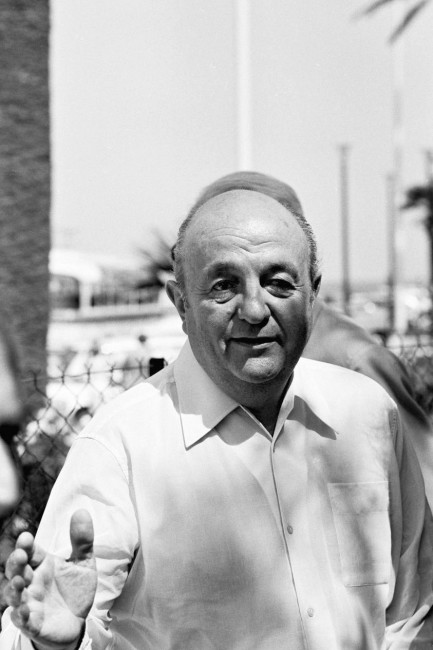 Actor Bernard Blier, 1975.
Actor Bernard Blier, 1975.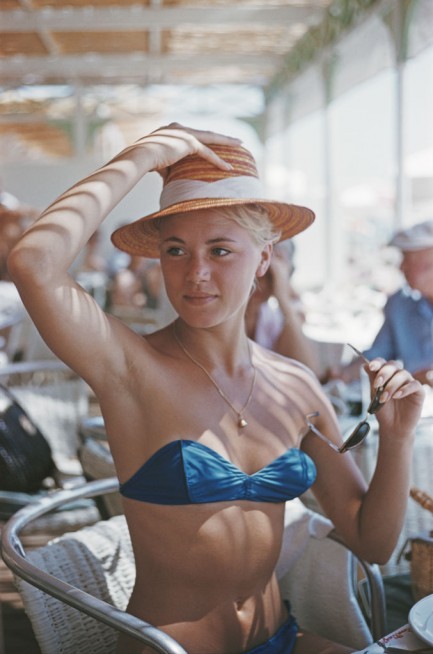 An unidentified bikini wearer boldly enjoys a lunch in a café on the Croisette, 1958.
An unidentified bikini wearer boldly enjoys a lunch in a café on the Croisette, 1958.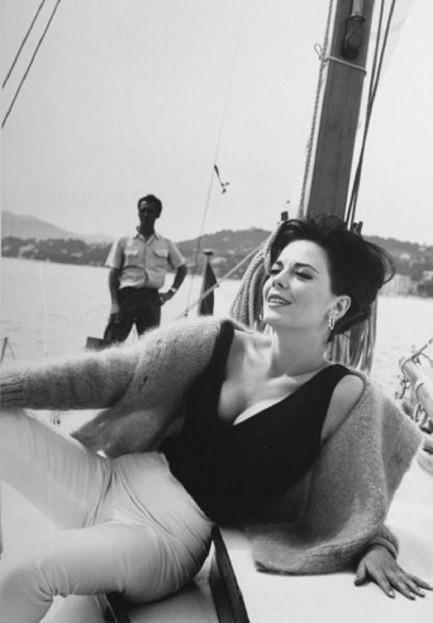 Natalie Wood aboard a sailboat in 1962.
Natalie Wood aboard a sailboat in 1962.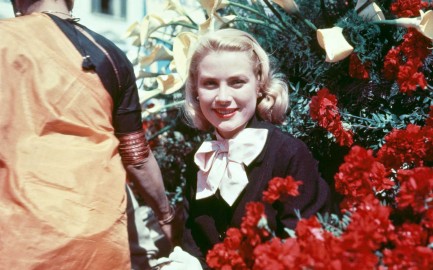
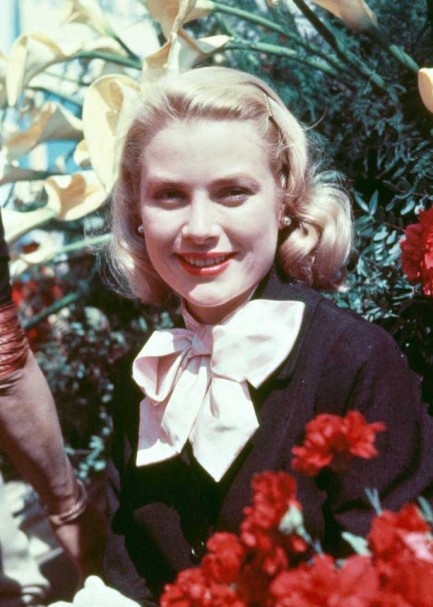 Grace Kelly, 1955.
Grace Kelly, 1955.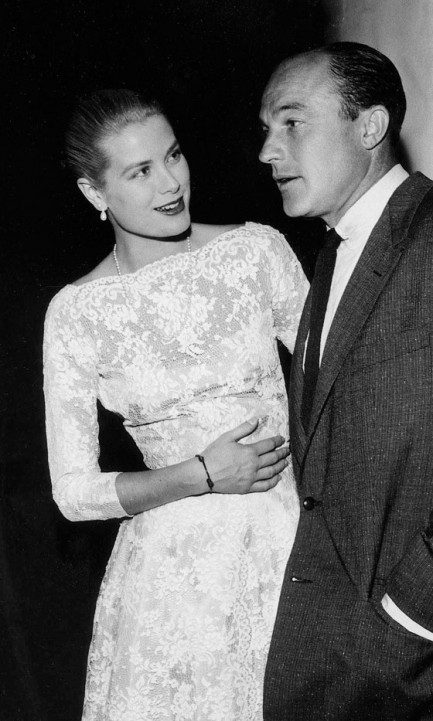 Kelly times two—Grace Kelly and Gene Kelly, hanging out, also in 1955.
Kelly times two—Grace Kelly and Gene Kelly, hanging out, also in 1955.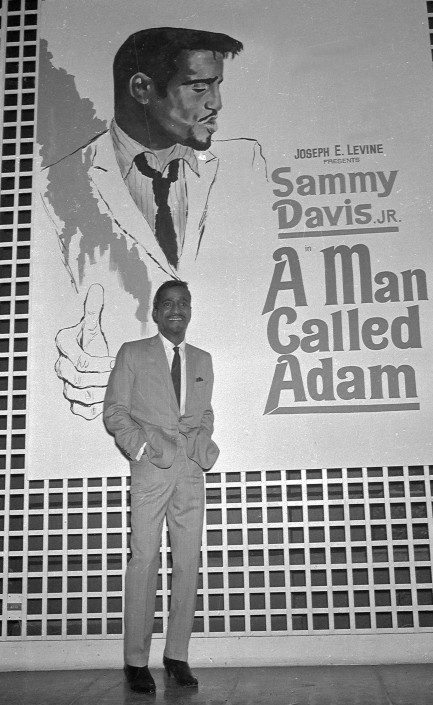 Sammy Davis, Jr. poses in front of a billboard promoting his film A Man Called Adam, 1966.
Sammy Davis, Jr. poses in front of a billboard promoting his film A Man Called Adam, 1966.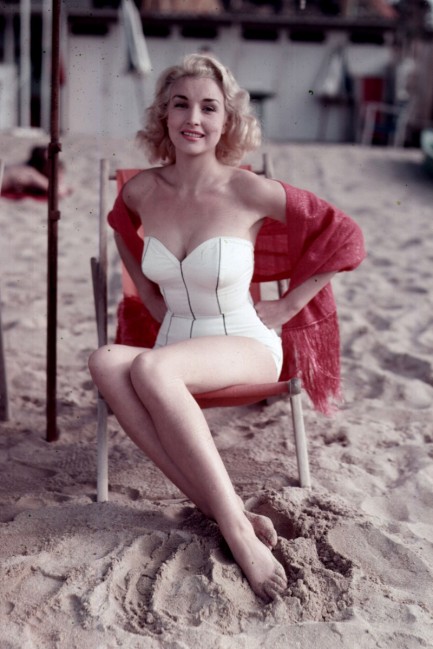 Joan Scott gets sand between her toes in 1955. Scott is obscure. She isn't even the most famous Joan Scott anymore. The IMDB entry for the only Joan Scott near the appropriate age is for an actress born in 1920 who didn't begin acting until 1967. The Joan Scott above doesn't look thirty-five, though, and we doubt she would have been the subject of this somewhat well-known photo without parlaying it into a film appearance before twelve years had passed. So we don't think this is the Joan Scott referenced on IMDB.
Joan Scott gets sand between her toes in 1955. Scott is obscure. She isn't even the most famous Joan Scott anymore. The IMDB entry for the only Joan Scott near the appropriate age is for an actress born in 1920 who didn't begin acting until 1967. The Joan Scott above doesn't look thirty-five, though, and we doubt she would have been the subject of this somewhat well-known photo without parlaying it into a film appearance before twelve years had passed. So we don't think this is the Joan Scott referenced on IMDB.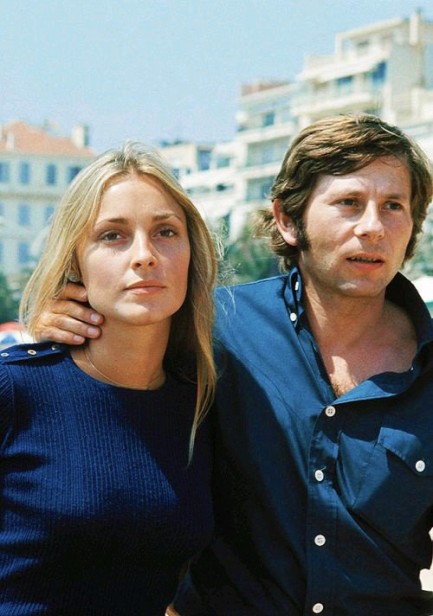
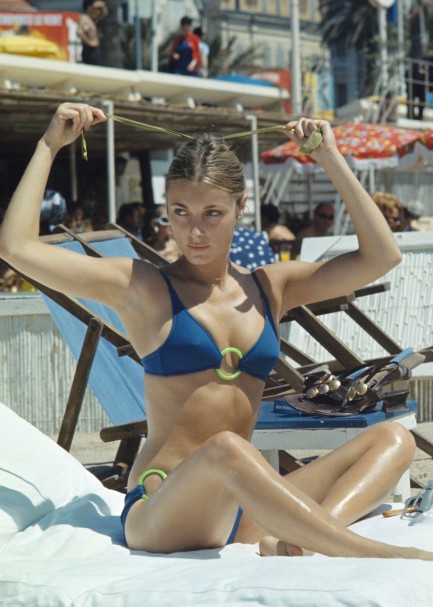 Sharon Tate, with Roman Polanski, and solo, 1968.
Sharon Tate, with Roman Polanski, and solo, 1968.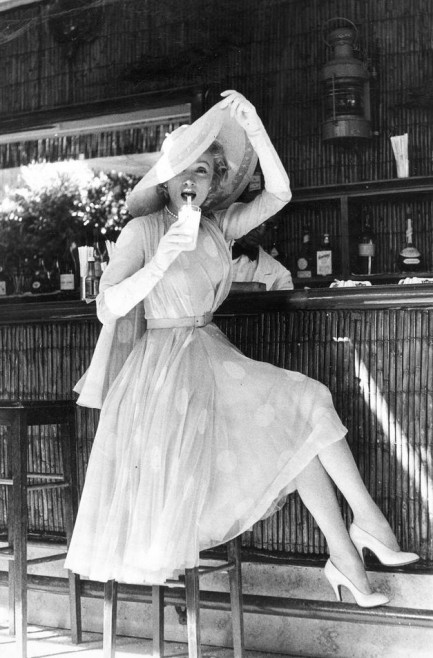 Marlene Dietrich brings glamour to a tiki themed bar in 1958.
Marlene Dietrich brings glamour to a tiki themed bar in 1958.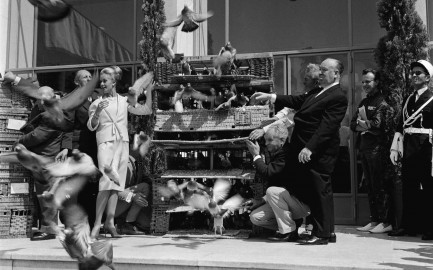
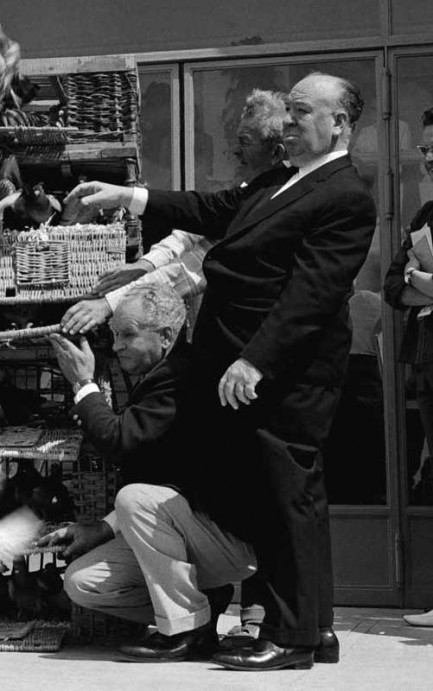 Tippi Hedren and Alfred Hitchcock release caged birds as a promo stunt for The Birds in 1963.
Tippi Hedren and Alfred Hitchcock release caged birds as a promo stunt for The Birds in 1963.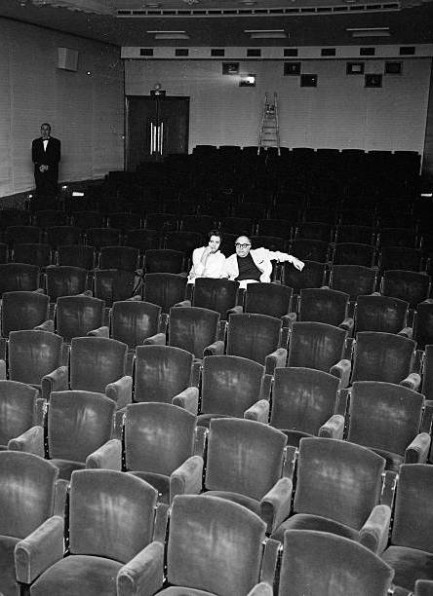 Sophia Loren sits with husband Carlo Ponti, who was a member of the 1966 Festival jury.
Sophia Loren sits with husband Carlo Ponti, who was a member of the 1966 Festival jury.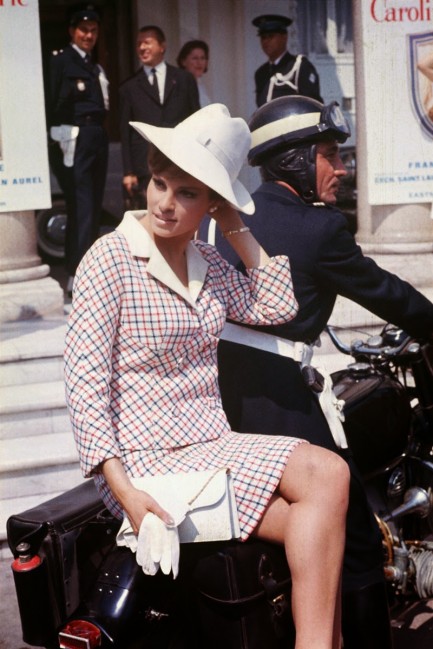 Raquel Welch poses on a motorcycle in 1966.
Raquel Welch poses on a motorcycle in 1966.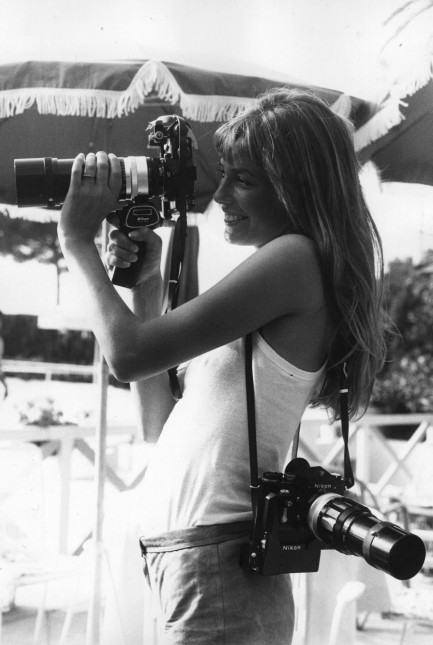 Jane Birkin takes aim with one of her cameras in 1975.
Jane Birkin takes aim with one of her cameras in 1975.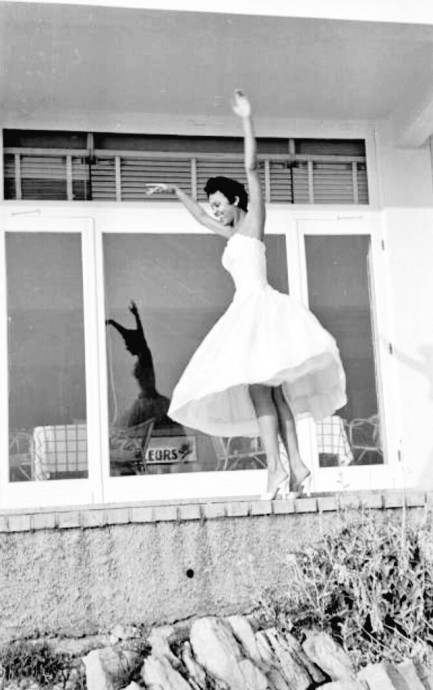 Dorothy Dandridge frolics in 1955, when she was promoting her film Carmen Jones.
Dorothy Dandridge frolics in 1955, when she was promoting her film Carmen Jones. Cinematic icon Catherine Deneuve and her sister Françoise Dorléac in 1965. Dorléac died in an automobile accident a couple of years later.
Cinematic icon Catherine Deneuve and her sister Françoise Dorléac in 1965. Dorléac died in an automobile accident a couple of years later.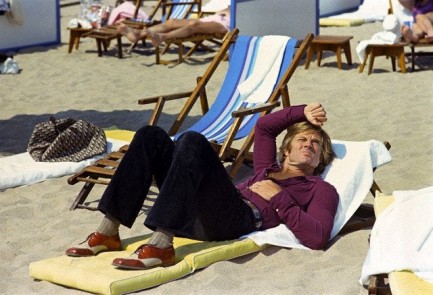 Robert Redford lounges on the beach in 1972. Based on his outfit you'd think he was in Cannes to promote The Sting, but he was actually there for his western Jeremiah Johnson, which screened May 7 of that year.
Robert Redford lounges on the beach in 1972. Based on his outfit you'd think he was in Cannes to promote The Sting, but he was actually there for his western Jeremiah Johnson, which screened May 7 of that year.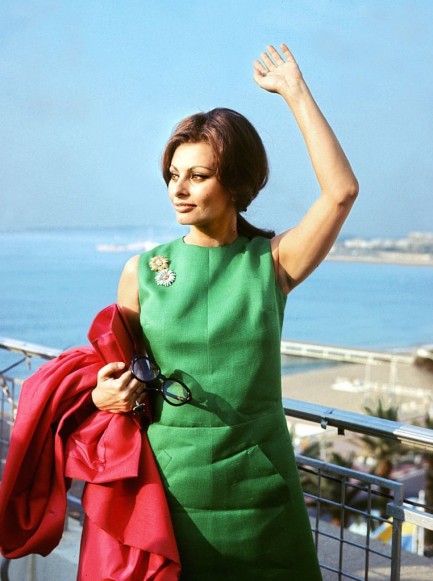 Sophia Loren waves to well-wishers in 1964.
Sophia Loren waves to well-wishers in 1964.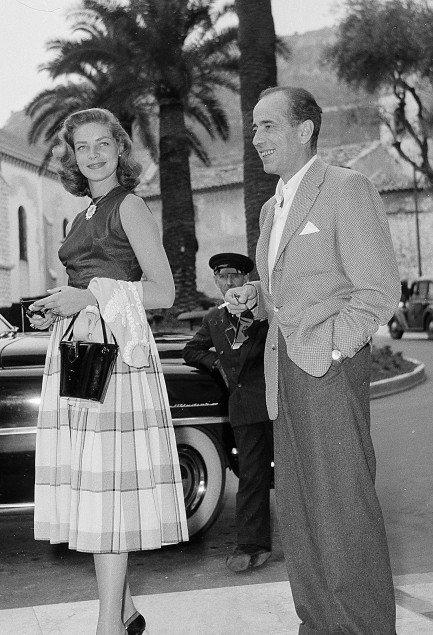 Bogie and Bacall paired up and looking distinguished in 1957.
Bogie and Bacall paired up and looking distinguished in 1957.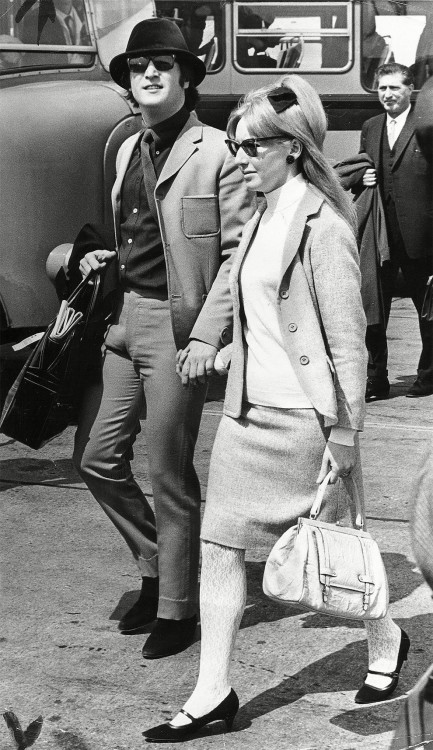
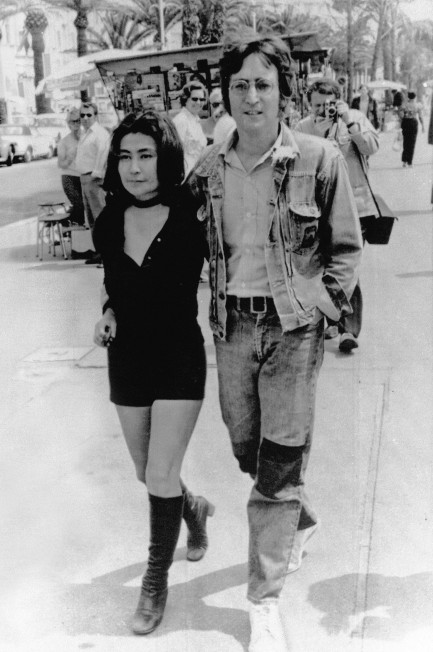 John and Cynthia Lennon in 1965, and John with Yoko Ono in 1971. Every story John told on that second trip probably started with, “When I was here with the first love of my life...” until Yoko smacked him across the mouth.
John and Cynthia Lennon in 1965, and John with Yoko Ono in 1971. Every story John told on that second trip probably started with, “When I was here with the first love of my life...” until Yoko smacked him across the mouth.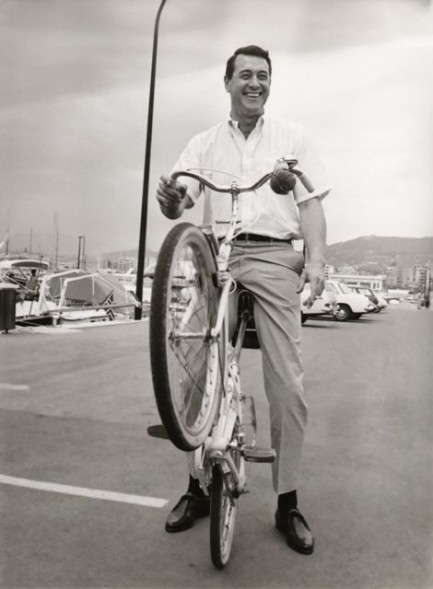 Rock Hudson and bicycle in 1966.
Rock Hudson and bicycle in 1966.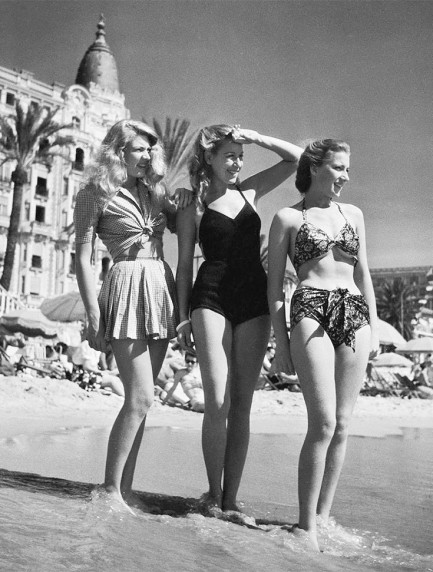 Unidentified actresses pose on the beach in 1947. To the rear is the Hotel Carlton, mentioned in the Edith Piaf image, built on the Croisette and finished in 1910.
Unidentified actresses pose on the beach in 1947. To the rear is the Hotel Carlton, mentioned in the Edith Piaf image, built on the Croisette and finished in 1910.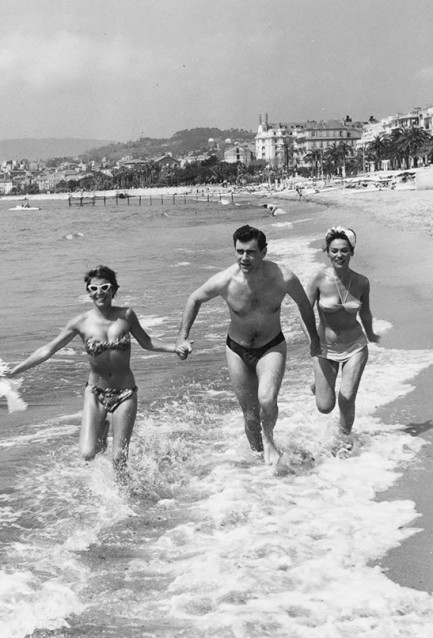 George Baker, Bella Darvi (right—your right, not his), and an unknown acquaintance have a surfside run/photo op in 1956.
George Baker, Bella Darvi (right—your right, not his), and an unknown acquaintance have a surfside run/photo op in 1956.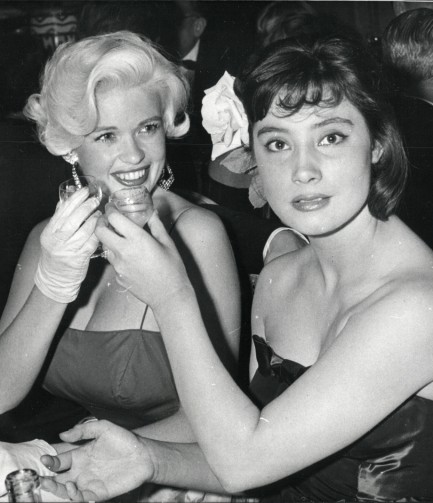 Jayne Mansfield and Russian actress Tatiana Samoïlova enjoy a toast in 1958. Mansfield probably shared the story of how she once made Sophia Loren stare at her boobs, and Samoïlova said, “Cheers to you—well played, you provocative American minx.”
Jayne Mansfield and Russian actress Tatiana Samoïlova enjoy a toast in 1958. Mansfield probably shared the story of how she once made Sophia Loren stare at her boobs, and Samoïlova said, “Cheers to you—well played, you provocative American minx.”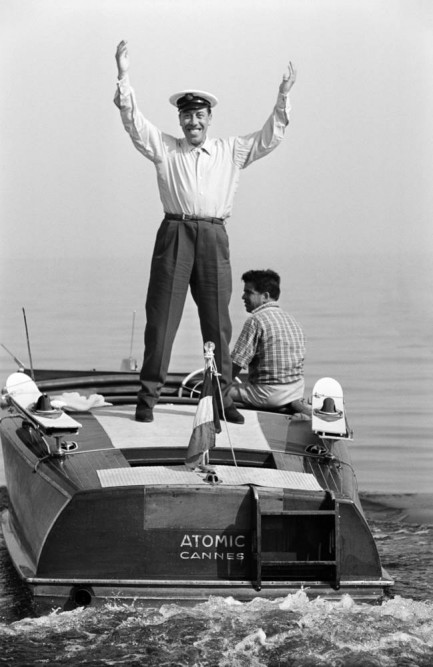 French actor Fernandel, whose real name was Fernand Contandin, on his boat Atomic in 1956.
French actor Fernandel, whose real name was Fernand Contandin, on his boat Atomic in 1956.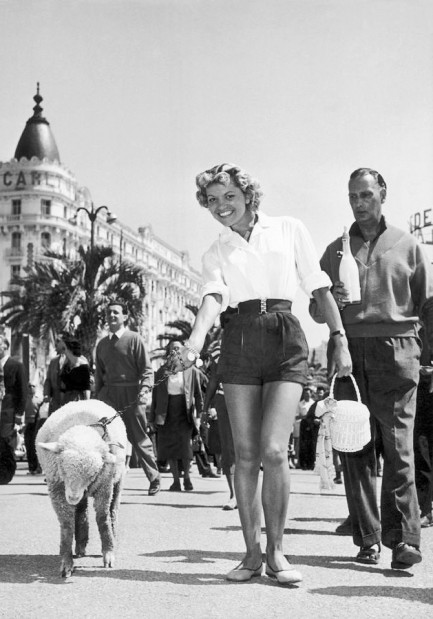 Arlette Patrick figures out a different way to generate publicity—by walking her sheep on the Croisette in 1955.
Arlette Patrick figures out a different way to generate publicity—by walking her sheep on the Croisette in 1955. A pair of water skiers show perfect form in 1955, as a battleship floats in the background.
A pair of water skiers show perfect form in 1955, as a battleship floats in the background.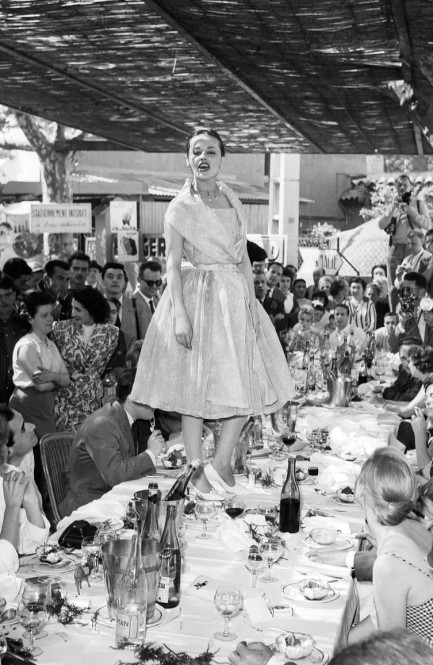 Jeanne Moreau, for reasons that are unclear, poses on a banquet table in 1958. Most sources descibe this in such a way as to make it seem spontaneous, but we have our doubts. It's a great shot, though.
Jeanne Moreau, for reasons that are unclear, poses on a banquet table in 1958. Most sources descibe this in such a way as to make it seem spontaneous, but we have our doubts. It's a great shot, though.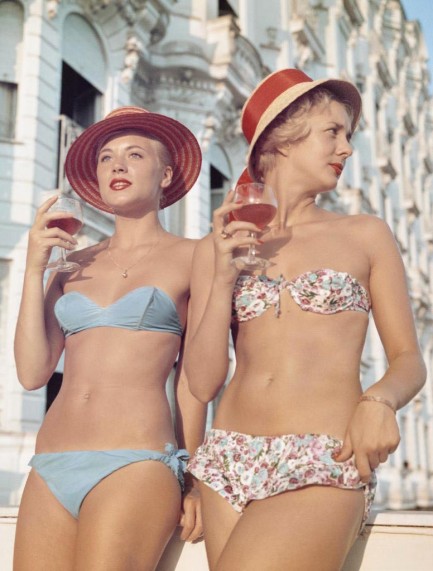 Two unidentified women take in the scene from the terrace of the Hotel Carlton, 1958. This shot is usually said to portray two tourists, but the woman on the left is the same person as in the bikini lunch shot from earlier, which tells us she's a model or actress, and both photos are staged. Like we said, publicity is everything in Cannes.
Two unidentified women take in the scene from the terrace of the Hotel Carlton, 1958. This shot is usually said to portray two tourists, but the woman on the left is the same person as in the bikini lunch shot from earlier, which tells us she's a model or actress, and both photos are staged. Like we said, publicity is everything in Cannes.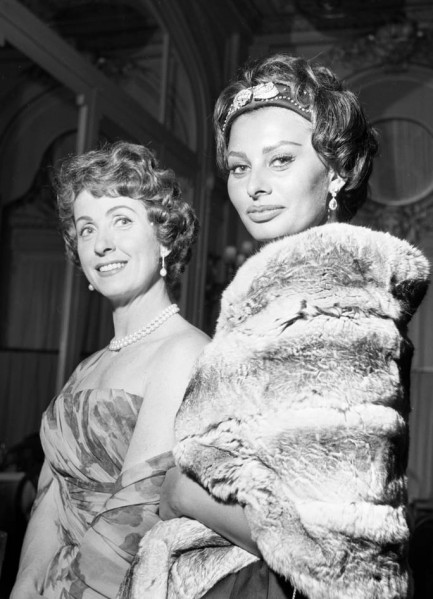
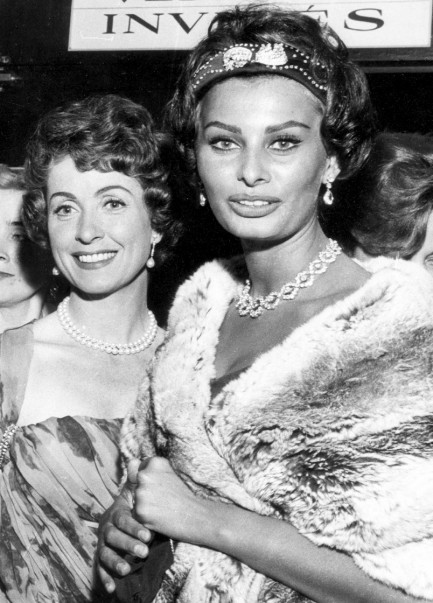 Danielle Darrieux and Sophia Loren at the 11th Cannes Film Festival, 1958.
Danielle Darrieux and Sophia Loren at the 11th Cannes Film Festival, 1958.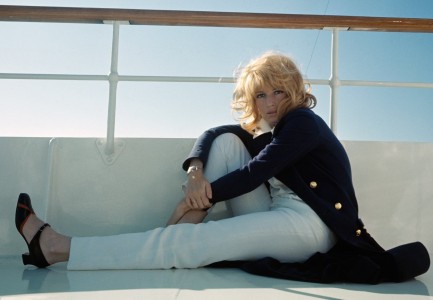 Italian actress Monica Vitti chills on a boat in 1968.
Italian actress Monica Vitti chills on a boat in 1968.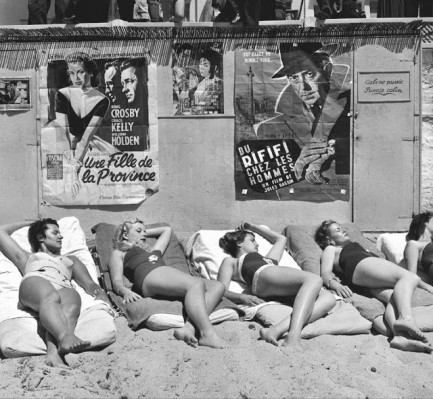 Aspiring stars catch some rays on the Croisette beach in 1955. The two large posters behind them are for The Country Girl with Grace Kelly, and Jules Dassin's Du rififi chez les hommes, both below.
Aspiring stars catch some rays on the Croisette beach in 1955. The two large posters behind them are for The Country Girl with Grace Kelly, and Jules Dassin's Du rififi chez les hommes, both below.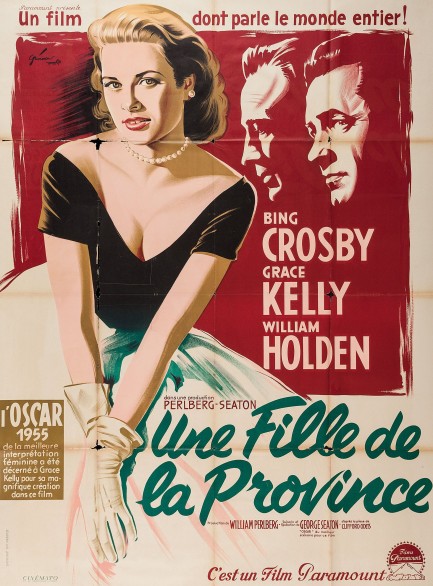
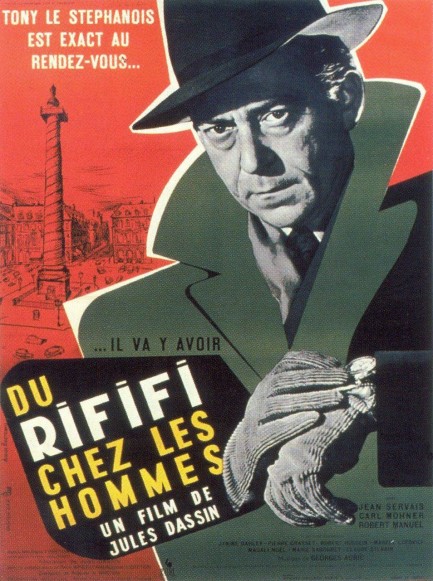
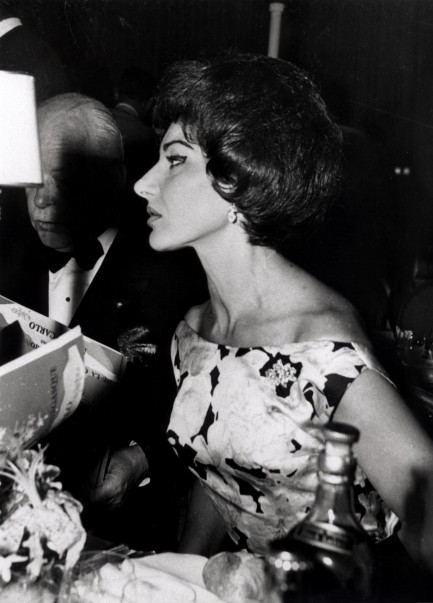 The renowned opera singer Maria Callas, 1960.
The renowned opera singer Maria Callas, 1960.| Femmes Fatales | Nov 12 2014 |

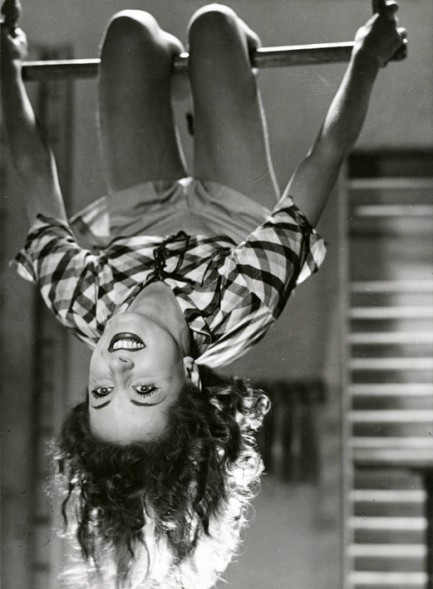
| Intl. Notebook | Dec 30 2010 |

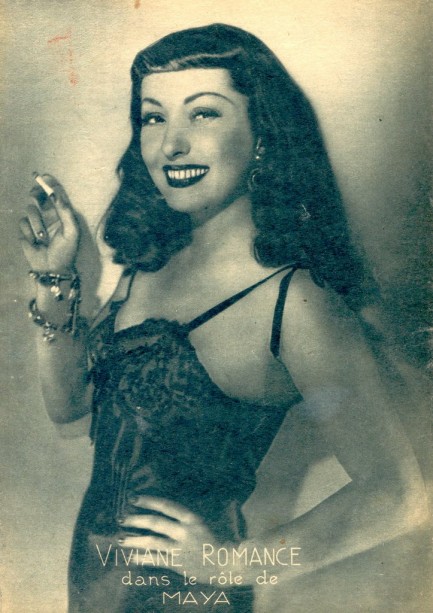
A couple of days ago we did a post of Mexican film magazines and basically, we knew none of the cover stars. But we were curious, especially about the interestingly named Viviane Romance, and decided to dig a bit more deeply. Born Pauline Arlette Ortmans in France in 1912, her career began in 1925 at age thirteen, when she danced at the Sarah Bernhardt Theatre in Paris. The next year she scored a spot as a Moulin Rouge dancer, and at sixteen moved on to dance at the famed Bal Tabarin nightclub. At eighteen she entered and won the Miss Paris pageant but was stripped of her title when she was found to be pregnant.
This loss of her crown, while doubtless dismaying for Romance, also generated public recognition that she parlayed into a film role in 1935’s Princess Tam Tam, in which starred American dancer Josephine Baker. In 1936’s La belle équipe, she played the role of a young woman who destroyed the friendship of co-stars Jean Gabin and Charles Vanel. The film was a hit, and a series of bad girl roles followed in Naples au baiser de feu, La Maison du Matais, Prisons de femmes and Le puritain. She had become one of cinema’s first femmes fatales.
When the German army swept into France in May 1940, Romance found herself caught in a dilemma. The Nazis were eager to create a veneer of normalcy. That meant they were willing to allow the French film industry to function, though under the auspices of their Propagandastaffe, which would censor any content deemed disrespectful or harmful toward Germany. Faced with the choice of working for the Nazis or retiring—which might not have been allowed without serious consequences—Romance chose to continue performing, and starred in Vénus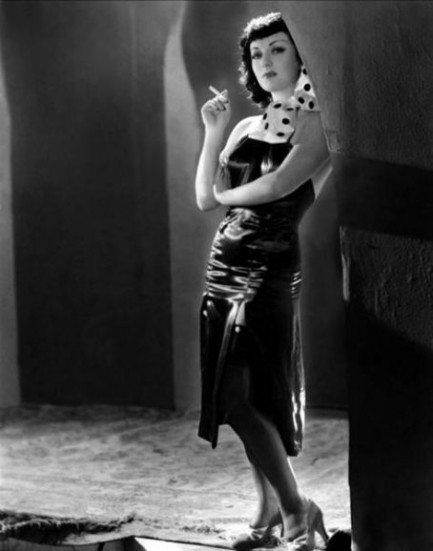 aveugle, Feu sacre, Une femme dans la nuit, and Cartacalha, reine des gitans. In the last, she sang the hit song “Chanson gitane (Sur la route qui va).”
aveugle, Feu sacre, Une femme dans la nuit, and Cartacalha, reine des gitans. In the last, she sang the hit song “Chanson gitane (Sur la route qui va).”
It’s worth pointing out that Romance wasn’t alone in her decision to perform for the Nazis. Many of France’s top stars, including Danielle Darrieux, Junie Astor, René Dary, Suzy Delair, Albert Préjean and others did the same. In select instances, some type of pressure was brought to bear. For instance, in Darrieux’s case, the Nazis had imprisoned her husband Porfirio Rubirosa, and her acting was the price for his freedom. At the same time, it should also be noted that many French actors made the choice to ignore the plight of their Jewish compatriots. The Germans banned Jews from any participation in cinema, and the workers who remained were required to carry cards affirming their non-Jewishness. Thus while the genocidal extent of Nazi plans may not have been crystal clear to some actors, the intent to—at a minimum—erase Jews from public life was certainly no secret.
But Romance and others performed anyway. And of course, giving the Nazis an inch meant they would take a mile. Ever vigilant for propaganda opportunities, party officials pressured Romance, Darrieux and the other actors into traveling to Germany for a highly publicized visit to several Berlin film studios. Newspapers and newsreels touted the appearances in a blatant attempt to burnish the Nazis artistic bona fides. For the segment of French citizenry opposed to the occupation, the actors had crossed the line. It was one thing to continue working—everyone needed to do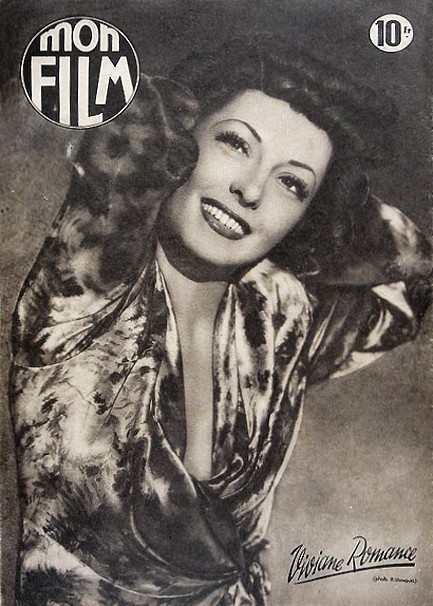
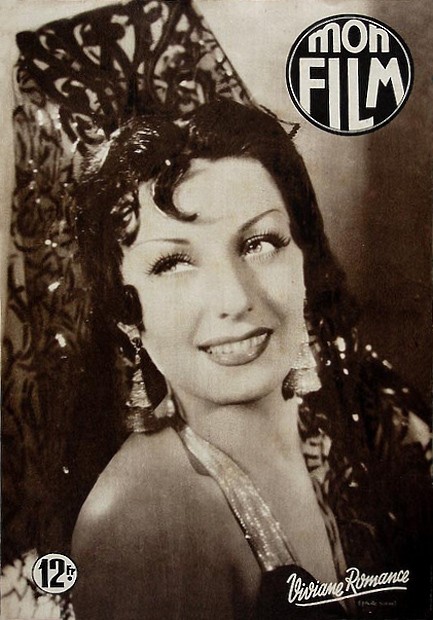 that. But to allow themselves to be used to legitimize the Nazi agenda was an entirely different story. When the Germans were finally expelled from France in 1944, Romance was thrown in jail. We don’t have much information about this event. We can only say she was eventually forgiven—officially at least—for what many perceived as her feeble level of the resistance to the Nazis.
that. But to allow themselves to be used to legitimize the Nazi agenda was an entirely different story. When the Germans were finally expelled from France in 1944, Romance was thrown in jail. We don’t have much information about this event. We can only say she was eventually forgiven—officially at least—for what many perceived as her feeble level of the resistance to the Nazis.
After the war, Romance immersed herself in work, making eight movies in the next three-plus years. In 1949 she played the role of Bella in the film Maya, for which you see the promo art at top. Her performance was lavishly reviewed—she was the toast of Paris again. Romance worked steadily through the next decade until her star began to dim in the early 1960s. She grappled with financial difficulty in the mid-1960s, and at one point had to sell off her possessions to survive. She made her last film, Nada, in 1974, and died in 1991 in Nice, on France’s Côte d’Azur, at age seventy-nine.
It would be journalistically tidy to write that Viviane Romance lived a life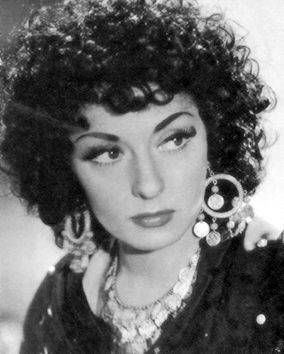 that somehow embodied her stage surname, but it would also be glib and untrue. The scandal of unwed motherhood, the climb up the ladder while still just a teenager, the shadow of Nazism over the prime of her career, her stint behind bars—none of it can be romanticized. Nor can her three failed marriages. If anything, Romance was like the narrator of the song she once memorably performed, “Chanson gitane.” That woman was strong enough to pass “with a noise of horses” but fragile as “a shiver of tinsel.” Ultimately Romance's story mirrors that of many women who survived dangerous times. They had to be tough, smart, and pragmatic—then when order returned they had to be judged on their failings and hope for forgiveness.
that somehow embodied her stage surname, but it would also be glib and untrue. The scandal of unwed motherhood, the climb up the ladder while still just a teenager, the shadow of Nazism over the prime of her career, her stint behind bars—none of it can be romanticized. Nor can her three failed marriages. If anything, Romance was like the narrator of the song she once memorably performed, “Chanson gitane.” That woman was strong enough to pass “with a noise of horses” but fragile as “a shiver of tinsel.” Ultimately Romance's story mirrors that of many women who survived dangerous times. They had to be tough, smart, and pragmatic—then when order returned they had to be judged on their failings and hope for forgiveness.
| Femmes Fatales | Dec 31 2009 |

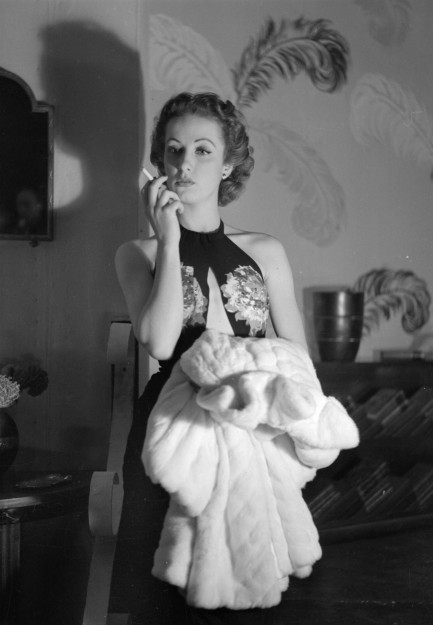
Above: French actress Danielle Darrieux, circa late ’40s. This is a pretty nice shot. What we like about it most, other than Darrierux herself, is how the wallpaper makes it look like she's wearing a feathered hat.
| Hollywoodland | Jul 30 2009 |

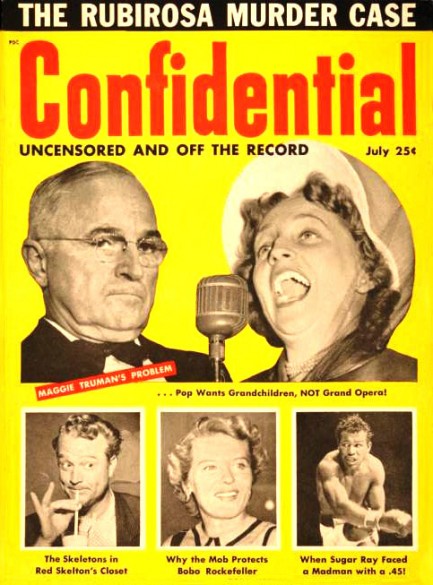 Today we’re back to the top dog of classic tabloids, the always-titillating Confidential. The above issue is from fifty-five years ago this month, July 1954, and as always the cover promises scandalous inside scoop—this time on champs, presidents, and filthy rich heiresses. But it’s the unassuming banner on the Rubirosa murder case that interests us, because it refers to none other than Porfirio Rubirosa, and if you’ve never heard of him, then prepare yourself to meet (cue grandiose flamenco chords) The Most Interesting Man in the World.
Today we’re back to the top dog of classic tabloids, the always-titillating Confidential. The above issue is from fifty-five years ago this month, July 1954, and as always the cover promises scandalous inside scoop—this time on champs, presidents, and filthy rich heiresses. But it’s the unassuming banner on the Rubirosa murder case that interests us, because it refers to none other than Porfirio Rubirosa, and if you’ve never heard of him, then prepare yourself to meet (cue grandiose flamenco chords) The Most Interesting Man in the World.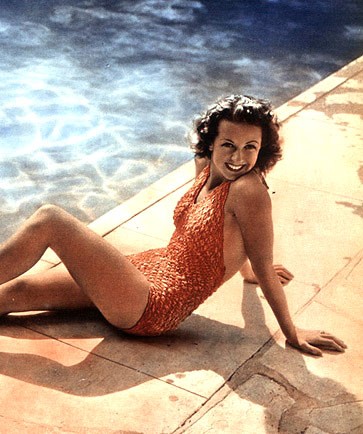 Rubirosa had developed passions for polo, racing, gambling, and other expensive upper crust pursuits. He excelled at all of them. Perhaps the only thing he wasn’t good at was fidelity, which led to his divorce from Flor in 1937. But his sheer magnetism—or perhaps the fact that he was a valuable hired gun—kept him in dictator dad’s good graces, and he continued to receive diplomatic posts. When World War II swept across Europe, Rubirosa made a stack of money selling Dominican exit visas to fleeing Jews. At some point the Gestapo imprisoned him, but he was released after six months. After that, he was allegedly recruited as a political assassin.
Rubirosa had developed passions for polo, racing, gambling, and other expensive upper crust pursuits. He excelled at all of them. Perhaps the only thing he wasn’t good at was fidelity, which led to his divorce from Flor in 1937. But his sheer magnetism—or perhaps the fact that he was a valuable hired gun—kept him in dictator dad’s good graces, and he continued to receive diplomatic posts. When World War II swept across Europe, Rubirosa made a stack of money selling Dominican exit visas to fleeing Jews. At some point the Gestapo imprisoned him, but he was released after six months. After that, he was allegedly recruited as a political assassin.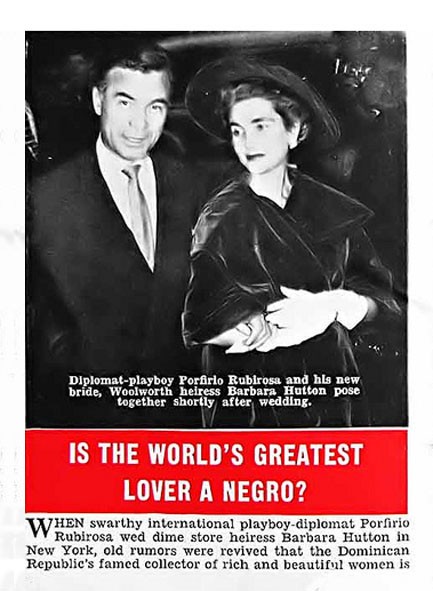
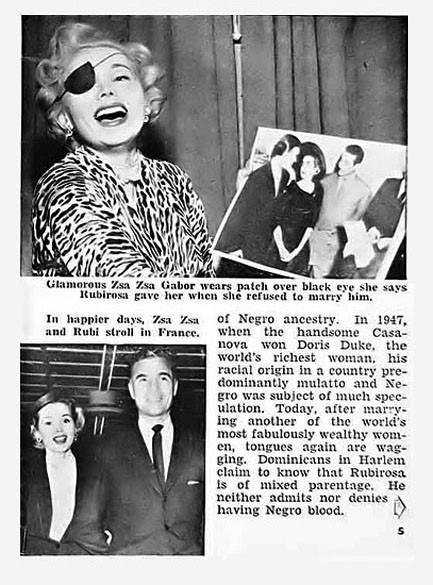 you'd expect from The Most Interesting Man in the World—he never addressed it all, at least not in public. His silence basically amounted to: “So what if I am?” And if the rumors bothered him, he surely derived ample compensation from the fact that legions of female admirers who’d heard about that pepper grinder of his didn’t care.
you'd expect from The Most Interesting Man in the World—he never addressed it all, at least not in public. His silence basically amounted to: “So what if I am?” And if the rumors bothered him, he surely derived ample compensation from the fact that legions of female admirers who’d heard about that pepper grinder of his didn’t care.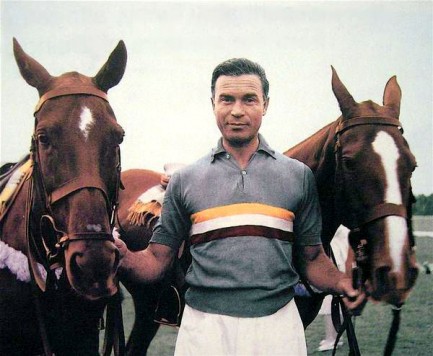 job?” Rubirosa reportedly answered, “Women are my full-time job.” At some point he met Ian Fleming, and the novice writer came up with the great idea of basing a character on Rubirosa—a certain spy named James Bond.
job?” Rubirosa reportedly answered, “Women are my full-time job.” At some point he met Ian Fleming, and the novice writer came up with the great idea of basing a character on Rubirosa—a certain spy named James Bond.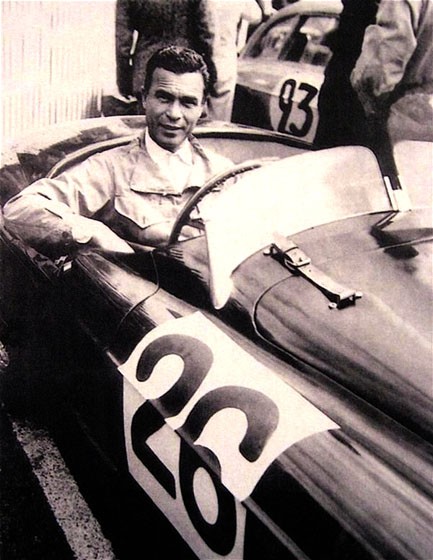 wet, and he was a little drunk. He lost control of the car and died in a fiery crash. The Most Interesting Man in the World was gone—literally burning out rather than fading away. He never finished his memoirs, and today the closest the world has to a Porfirio Rubirosa is a fictional character in a Dos Equis commercial.
wet, and he was a little drunk. He lost control of the car and died in a fiery crash. The Most Interesting Man in the World was gone—literally burning out rather than fading away. He never finished his memoirs, and today the closest the world has to a Porfirio Rubirosa is a fictional character in a Dos Equis commercial.



































































